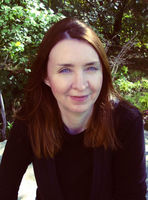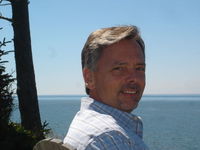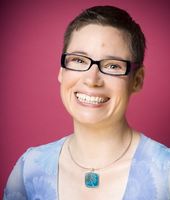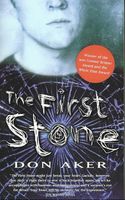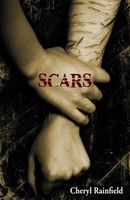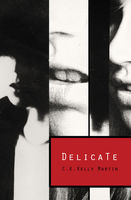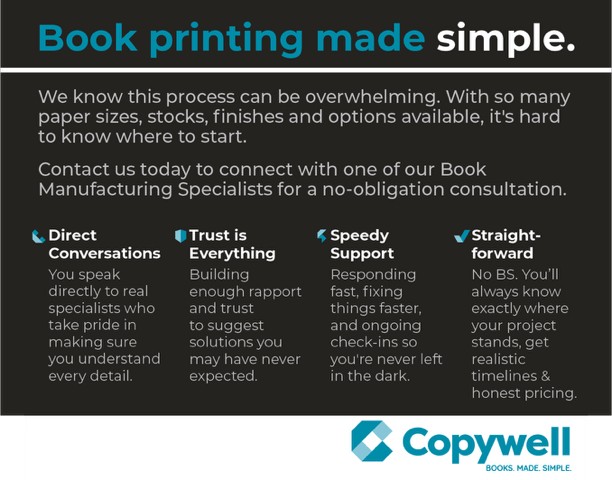Kid Lit Can, with Susan Hughes: Sex, and Drugs, and Rock and Roll: Writing Edgy YA (Part 1)
By Susan Hughes & Submitted by kateburgess
Drugs, gambling, sexual harassment, suicide, sexual abuse, physical abuse, cutting, death, sex, drugs, body image issues, bullying, STDs, abduction...between them, YA authors C.K. Kelly Martin, Don Aker and Cheryl Rainfield have touched on all these difficult themes.
Why do they do it? How far can they go when writing for teens? Do they ever have to hold back? What’s the most challenging part about writing for teens? And what tips will they share?
I’m so pleased that these three popular YA authors have agreed to answer all these questions and more in today’s and next month’s article. Read on!
C. K. Kelly Martin (www.ckkellymartin.com) began writing her first novel in a Dublin flat and finished it in a Toronto suburb. She currently resides in Southern Ontario and is the author of eight young adult novels.
Don Aker is the award-winning author of 20 books, among them several bestselling novels for teens. His most recent, Delusion Road, has been nominated for the 2016 White Pine Award. His website is www.donaker.com.
Cheryl Rainfield is the author of several YA novels, including the award-winning Scars, a novel about a queer teen sexual abuse survivor who uses self-harm to cope and Hunted, a novel about a teen telepath in a world where any paranormal power is illegal. Cheryl is a lesbian feminist, incest and ritual abuse survivor and an avid reader and writer. Her website is www.cherylrainfield.com.
Susan Hughes:
Could you each begin by telling us where most of your ideas for your YA novels originate?
C. K. Kelly Martin:
For my contemporary YAs, the main character and their situation seem to show up together—a package deal—and evolve in tandem. They’re so closely related that it’s nearly impossible for me to pick them apart. Before I start on a manuscript I begin to hear a character’s voice in my head and I try to home in on whatever they’re dealing with.
Because my sci-fi YAs, Yesterday and Tomorrow, were more plot heavy, the process was a little different.
Don Aker:
Every one of my YA novels has grown out of an event in my life that brought me face-to-face with something I didn’t understand, evoking a question that haunted me and drew me to explore it. For example, after a teenager tragically killed a neighbour’s daughter while he was evading police—he drove through a red light and T-boned the girl’s car in an intersection—I began wondering what it would be like for a young person to have to live with the knowledge that he’d carelessly taken a life. That “wondering” led me to write The First Stone, in which a young offender throws a rock off an overpass into oncoming traffic and nearly kills a teenaged driver.
Your CanLit News
Subscribe to Open Book’s newsletter to get local book events, literary content, writing tips, and more in your inbox
After reading that one in three American high school students gambles money on a regular basis, I wondered if gambling among teens was a growing problem in Canada. That led to Running on Empty, in which a grade 12 student develops a gambling habit that impacts every facet of his life.
Cheryl Rainfield:
Most of the ideas for my novels are drawn from the trauma and other experiences I’ve lived through that deeply impacted me, as well as my desire to help create positive change in the world. I think about an issue I need to talk about—self-harm, dissociation, rape, abduction, queer characters—issues that, in my opinion, often aren’t talked about or talked about enough, issues that people need to know they’re not alone in. Then I start plotting the story and characters. I draw heavily on my own life experiences, but I craft them into fiction.
SH:
Would you agree that your YA novels are “edgy?” Do you deliberately set out to write novels in this style and, if so, why?
CKKM:
I don’t really think of my novel as “edgy.” To me, they just feel realistic. And no, I don’t think I deliberately write in this style. Instead, I’m naturally drawn to write about certain things and in a particular style. It reflects my own sense of the world, although not necessarily my own experiences. Life is so messy, and filled with good and bad. Actually I think there’s an awful lot of sweetness in my books too. Incredible friendships and people sticking their necks out for other people. Then there’s drug addiction, STDs, domestic violence. None of which is unusual. It’s everyday stuff.
DA:
Although romance and humour are often present to some degree in my novels, they couldn’t be called romantic or humorous. However, I don’t intentionally set out to write something that’s “edgy.” I need to be moved by my material. If I’m going to spend years on a manuscript, it needs to be about something that honestly intrigues me, compels me to keep moving forward. And because the subjects that intrigue me most tend to take me to dark places, I guess that’s why many of my novels might be considered “edgy.”
CR:
My novels are definitely edgy. The topics I write about are painful, difficult, or have stigma attached, and I put a lot of emotion into my writing. Yes, I intentionally create a lot of tension and suspense; I want to grip readers and keep them turning the pages. I also think I’m writing from what I know the best, the way I lived most of my life: in fear, anxiety and high tension. It’s actually hard for me to write about happiness or moments for the reader to breathe; I actually have to go back and purposely add it in. But I think a lot of teens can relate to that.
SH:
Do you ever feel you need to “hold back” in your novels in terms of content or language? How far can you go?
CKKM:
I can happily say my publishers have never held me back when it comes to content or language; we’ve always been on the same page. I don’t think there’s a universal answer to the question of how far you can go in YA. I feel a responsibility NOT to hold back because I believe the topics I’m tackling are ones that need to be dealt with truthfully, openly and with a level of complexity. I’m in total agreement with YA writer Malorie Blackman who noted pornography’s toxic impact on young people and believes honest sex scenes in books can help combat that, for example. In my opinion it’s not about pushing boundaries; it’s just about being open and honest and acknowledging issues that young people are having.
DA:
Writing The First Stone was the first time I’d ever confronted the question about how far I should go with my content. My characters in that novel were marginalized teenagers whose lives were often characterized by criminal activity and violence, and I had trouble sanitizing them and their language to make them more acceptable for publication. There are only so many times an author can write “he cursed” or “he swore” before it sounds not only repetitive but ridiculous, so I began including the actual expressions that would naturally arise in my characters’ speech.
I worried that I was probably limiting my readership but decided that, if my editor believed I’d gone too far, we could make whatever changes were needed during the revision process. Lynne Missen, who edited The First Stone, made several suggestions that enhanced the story, but one change she didn’t recommend was to sanitize it. Like me, she believed that readers expected realism, and whitewashing my characters’ language and actions would only distance readers from the story. And upon its publication, I immediately received more responses about The First Stone than my earlier two novels combined, every person commenting on how much they enjoyed the book’s realism.
Interestingly, teachers were among my strongest advocates, thanking me for writing a novel that even their most reluctant readers devoured. Mind you, I sometimes receive criticism from adults about the content of my novels. Some parents, for example, have written to express concern about my use of profanity or my choice of themes (violence and sexuality are among the most targeted).
CR:
I do feel I need to hold back somewhat in both sexual content and swearing, since my novels are already highly emotionally charged and deal with painful issues. I want to make sure my work is published and reaches the teens and readers who need it. But I always write about queer characters, trauma, violence and abuse in emotionally realistic ways and from a survivor perspective; I will not back down from writing something that needs to be talked about—and that can come with risks.
I have seen some YA novels with graphic sex scenes and characters who swear a lot. I always include a thread of romance, especially with my queer characters, and some swearing; I think that makes it closer to the real world, and that swearing is appropriate in the context of something extreme, such as being stalked by an abuser or murderer—but I don’t load it in. I have seen YA books banned or challenged for sexuality and swearing. Sometimes a book ban or challenge can help readers find the book even more, but that’s not always the case.
My novel Scars was challenged a number of times. As well, I had a sweet kiss scene in the novel that was mostly edited out. I asked whether that was because my characters were queer, and was told no, that the same editing of sex scenes would happen for heterosexual characters and for any book headed for the school market—and I believe that’s true. So some of it depends on the publisher and the market.
SH:
How do you ensure the voices of your YA characters are authentic? What do you take into account when thinking about teen voice and dialogue?
CKKM:
I’m a terrible one for eavesdropping on conversations whenever I can. I eavesdrop on people of all ages, but especially teenagers. You also get a feel for how young people express themselves by looking at online posts and statuses. I don’t use particularly popular words or phrases, though, because anything too trendy quickly feels dated. It’s more of a vibe/attitude I go for and, of course, it depends on the character.
In Delicate, Lucan, who is one of the main characters, and his friends have a habit of declaring things "FUBAR," the military acronym that originated in WWII. Various main characters (hopefully!) all express themselves a little differently and it takes me a long time to get properly into a character’s individual voice every time I start a new book. I find I have to throw off the voices of character's past.
DA:
I believe I had an advantage there over some YA writers. Because I was also a high school teacher, I had endless opportunities to observe teens, to listen to them speak, and to watch them interact with each other, all of which was enormously helpful when it came to creating characters that lived and breathed on the page.
Having recently retired from teaching, I now readily accept invitations to speak in schools—in part so I can spend some time watching and listening to students. I prefer, however, not to copy expressions that are currently popular because these can quickly make a book sound dated. I’m more interested in how teenagers interact with each other, especially with regard to their incredible use of figurative language. For example, while visiting a school, I overheard one girl comment critically about another girl not in the group: “Her eyebrows look like skidmarks.” I was taken aback by the viciousness of that comment, but I was also enthralled by the vividness of its description so I used that line word-for-word in my latest novel, Delusion Road. I think one of the best ways of achieving authentic voice is to be a great eavesdropper. Just try not to get caught doing it.
CR:
I try to write the way I speak, and to make sure that the dialogue is colloquial, interesting and leaves out the boring bits. I also keep an ear out for how teens speak, and I try to use some terms that aren’t likely to become dated, such as “Oh my god.” I vividly remember being a traumatized teen and I use those intense emotions to bring authenticity in body language, responses and dialogue.
The views expressed by Open Book columnists are those held by the authors and do not necessarily reflect the views of Open Book.
Susan Hughes is an award-winning author of children's books — both fiction and non-fiction — including The Island Horse, Off to Class, Case Closed?, No Girls Allowed and Earth to Audrey. She is also an editor, journalist and manuscript evaluator. Susan lives in Toronto. Visit her website, www.susanhughes.ca.
